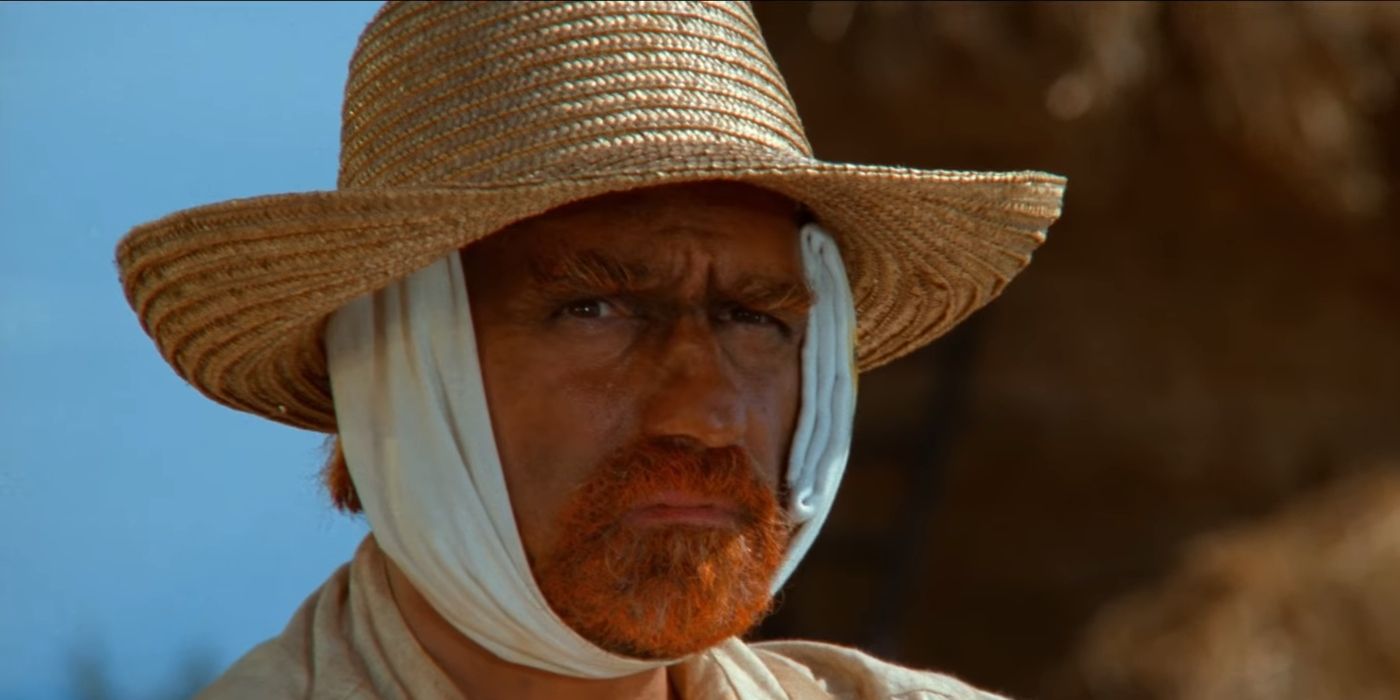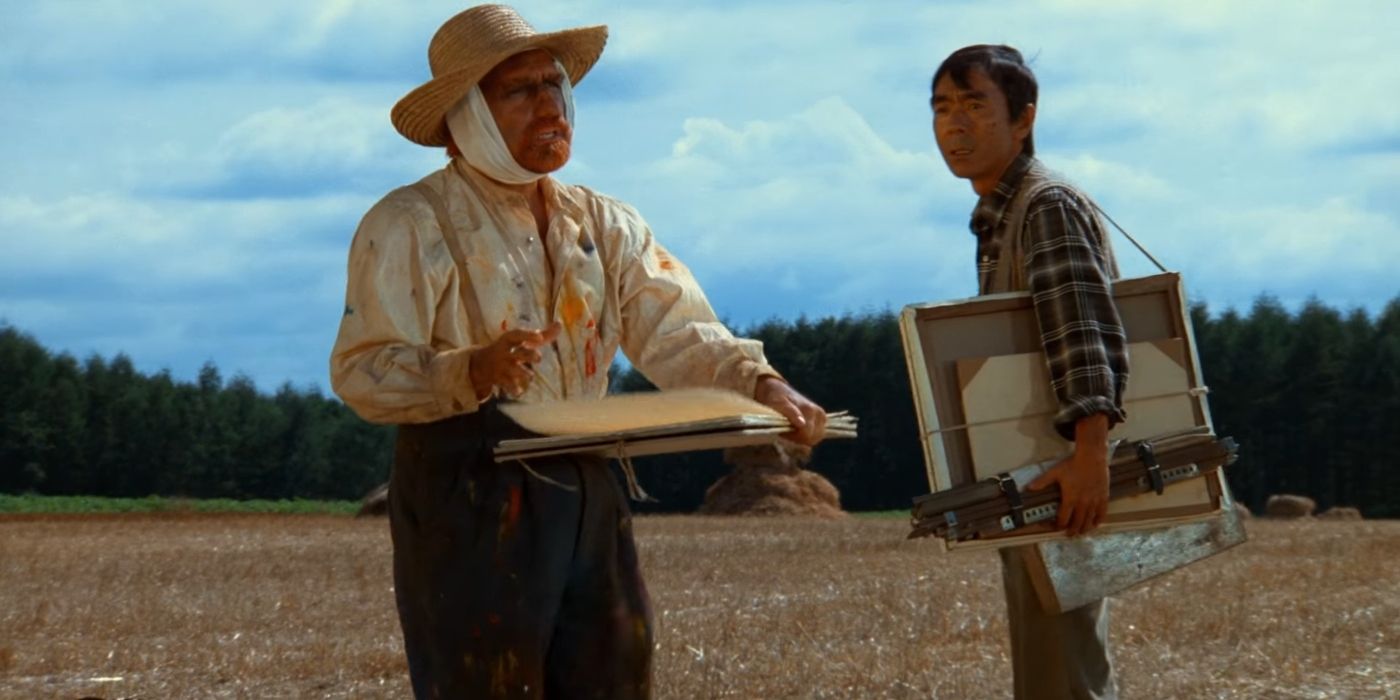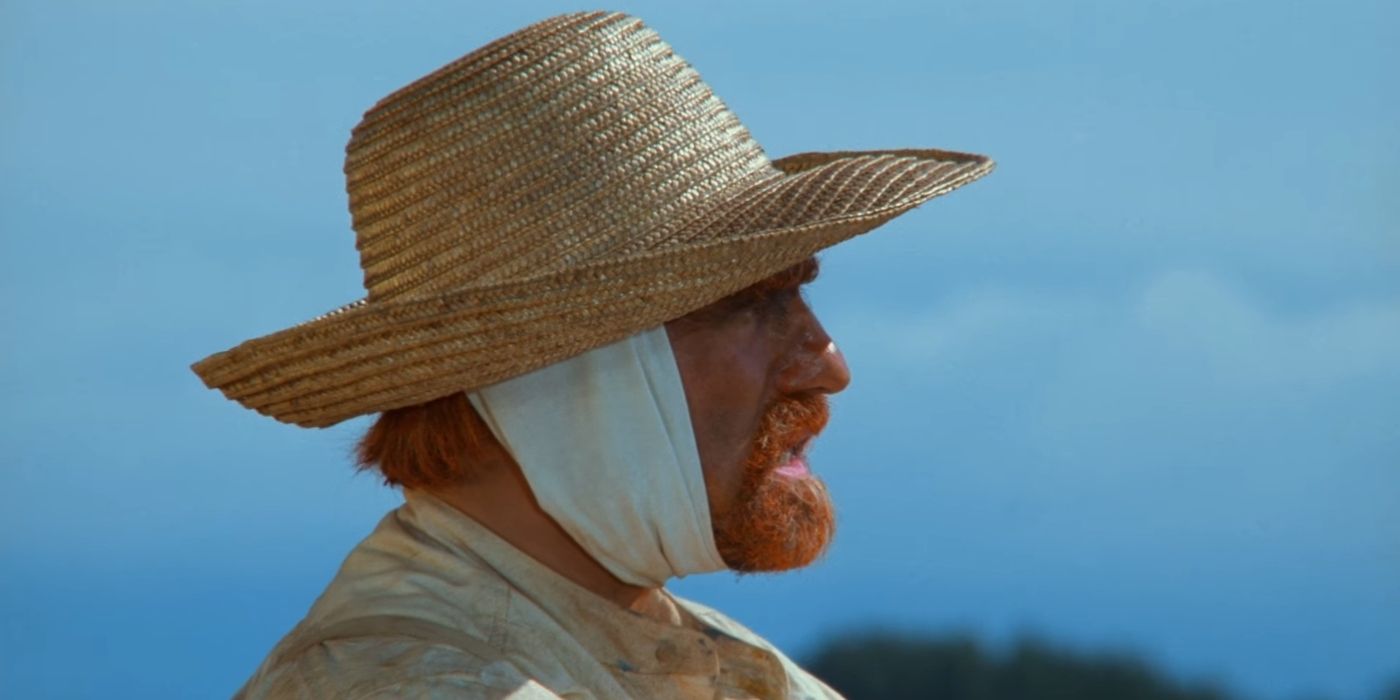Akira Kurosawa’s Dreams — which is now available on Blu-ray and in 4K-UHD from the Criterion Collection — is one of the last films produced by the legendary filmmaker. It’s a deeply personal collection of short vignettes that reimagines numerous recurring dreams the director experienced into beautifully composed short stories. Many of the shorts are rooted in horror, with hauntingly beautiful visuals and a bittersweet tone that explores questions of life and death. One of the most personally introspective is “Crows,” centering around Kurosawa’s perspective on one of the greatest painters of all time.
“Crows” focuses on Vincent van Gogh, exploring the motivations of the painter and his perspective on the world at large. Notably, the film reinforces the thematic power of this element by casting another legendary filmmaker — Martin Scorsese — in the role. It’s a uniquely powerful performance from a filmmaker far more known for his work behind the camera and speaks to a shared passion between the artist and the filmmakers that can sometimes feel limited by the world around them.
What Happens in “Crows”
While many of Dreams’ vignettes are rooted in the divide between humanity and nature — often with horror-tinted results — “Crows” is focused on the mindset of an artist. The short focuses on an unnamed man, an appreciator of art. He is introduced to observing the works of Vincent van Gogh in a gallery. As he becomes lost in the paintings, he finds himself actually within the fields Van Gogh painted decades before. While exploring this world, the man finds Van Gogh working on a new piece. While the man is enamored with Van Gogh, the legendary artist is more confused as to why the man isn’t compelled to paint the landscape himself.
Van Goth describes losing himself to the beauty of the world around him, creating works of art as if “in a dream.” He consumes the world around him and admits that it’s hard to restrain himself in this regard. He describes his work ethic as a locomotive that can’t halt. It’s this drive that led him to cut off one of his ears, as Van Gogh couldn’t quite paint it correctly. He can’t even spend time appreciating the landscape fully, instead retreating away from the man as “the sun” compels him to further illustrate the world. Van Gogh departs while the man gazes upon the sun, leading him to search after the painter. But Van Gogh is gone, and the man instead finds himself walking through many of Van Gogh’s most iconic paintings before returning to the real world.
Martin Scorsese’s Role in “Crows,” Explained
The entire segment is a departure from most of the film, which is largely focused on humanity’s struggles with death and the mysteries of nature. Instead, “Crows” focuses on questions of the artist and the way they perceive the world. In the same way, Kurosawa examines the world through a filmmaker’s lens, and he empathizes with Van Gogh’s appreciation of the world as a painter. Both are creatives compelled to capture the beauty of the world to the best of their ability. The bright visuals do not mask the inherent strife of the artist and the need to recreate the world as best they can. It’s then particularly notable who plays Van Gogh in the sequence and their own impact on the world of cinema.
Martin Scorsese is one of modern Hollywood’s most influential figures. The director of landmark movies like Taxi Driver, Goodfellas, and the upcoming Killers of the Flower Moon, Scorsese, has long heralded Kurosawa as one of his greatest personal inspirations. The filmmaker has also grown increasingly introspective with age, noting that given his age — 80 at the time of this writing — he only has a handful of films left. During an interview with Deadline to promote Killers of the Flower Moon, Scorsese noted that he feels he has plenty of other films left within him but that he’s “running out of time” to make them all. Scorsese recalls specifically how Kurosawa had expressed a similar sentiment to him in the waning years of his life and that Scorsese finally understands what he meant. Similar to the way Van Gogh’s artistic drive forces him to look beyond accolades and can even inspire self-harm in the name of his art, Scorsese cannot stop the artistic perspective he sees the world through. They are artists who cannot let go of their passion and are drawn to keep creating.
It makes sense then that Scorsese plays Van Gogh in the short. It’s a brief but quietly powerful performance, enhanced by the genuine feeling of quiet sadness and desperation to recreate the beauty he sees in the world. It feels particularly authentic coming from Scorsese, who has been making films for over fifty years and has the same kind of drive that fueled Kurosawa and Van Gogh before them. Van Gogh isn’t the first time the filmmaker has performed before as an actor. Scorsese has appeared in many of his own films in minor roles, sometimes even playing himself in entertainment-centric shows and films like The Player, 30 Rock, and Entourage. But his performance as Van Gogh carries a greater weight, given the impact the filmmaker has had on the world of art — and, in turn, the impact art has had on him.
Notably, there’s an inherent sadness in “Crows” and Scorsese’s performance in the film. There’s an appreciation of the artist and the immortal work they’ve produced. But the artist isn’t shown to be at peace or even happy with his contributions. Instead, the beautiful way he sees the world drives him to create more and more works. It’s the kind of passion that can never be fully satisfied and leads the artist to create until their final days. It speaks to the beauty that inspires art — the way it cannot result in fulfillment.
Akira Kurosawa’s Dreams is now available from the Criterion Collection wherever movies are sold.




